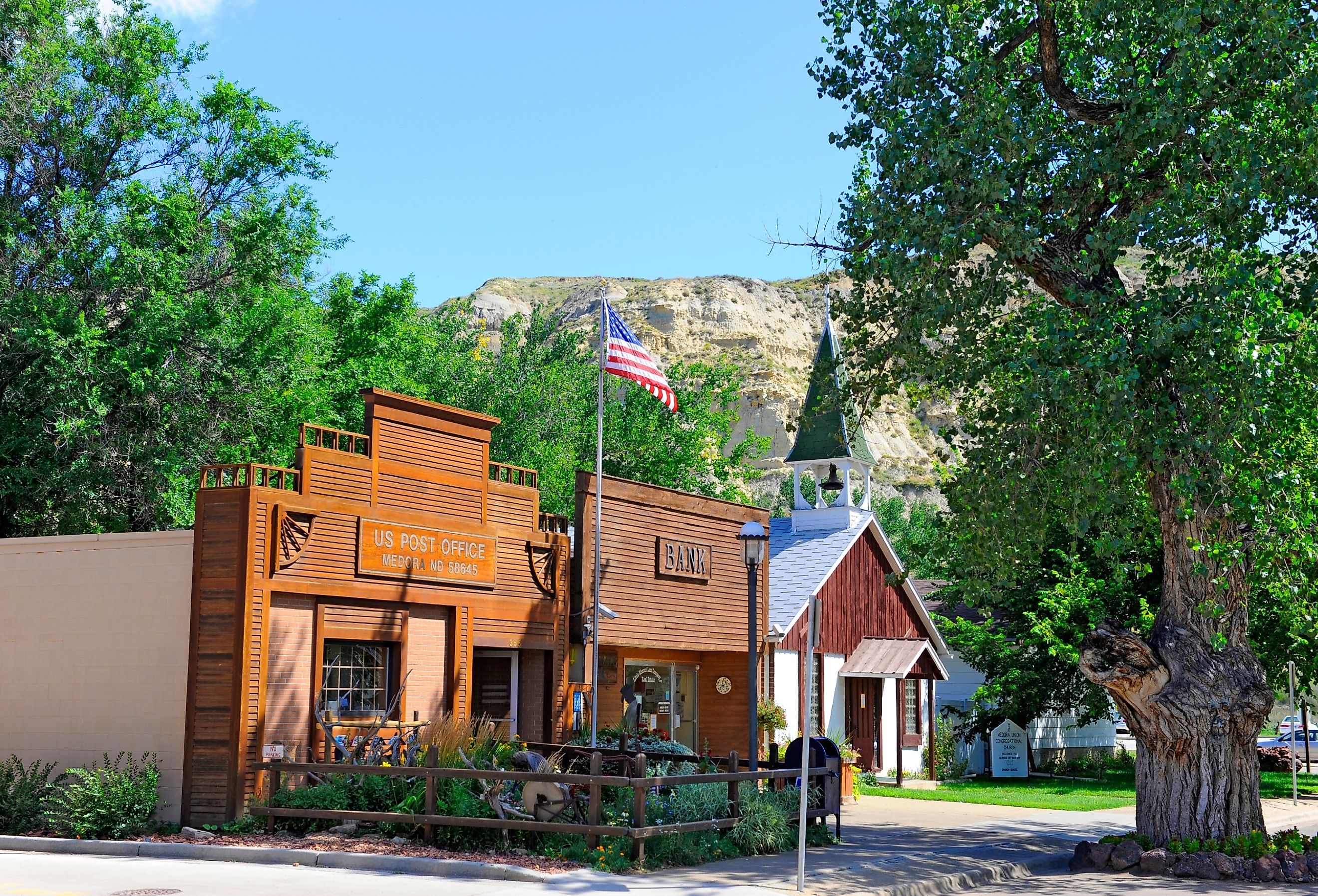
6 Undiscovered Small Towns in North Dakota
North Dakota is a diverse state despite its remote location and having a small population of under one million residents. The two largest cities include Fargo and Bismark, with Fargo having the largest population of approximately 128,000. North Dakota contains mountainous areas, despite not being well-known for its mountains, such as its nearby neighbor, Montana, like Devils Lake Mountain, which is great for hikers and rock climbers.
For those who don’t enjoy climbing mountainsides, this state is also a fantastic place for rock hunting, with the hills containing large deposits of quartzite and other lovely rocks. This is partially thanks to the state's phenomenal ancient history, with the region experiencing shifting terrain as massive glaciers cut across its landscape. Although the natural charm of the state is one of its main assets, it isn't all North Dakota has to offer. The small, undiscovered towns in the state provide plenty of charming activities for tourists to enjoy, including fairs hosted by the community, home-cooked meals at diners, and so much more.
Medora
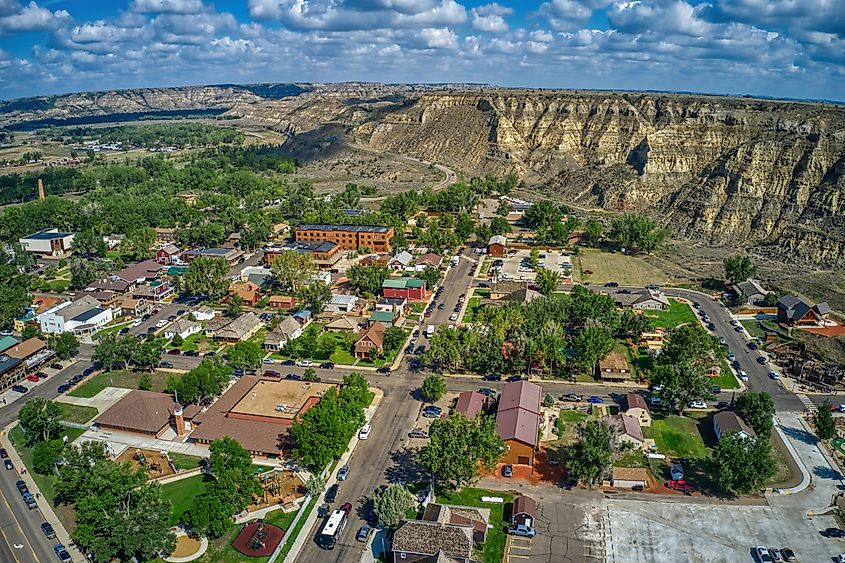
Medora is a small, adorable town in western North Dakota. As of 2022, it has 123 permanent residents who call this Western-style town their home. The little community sits along the Little Missouri River and traces its roots back to 1883 when Marquis de Mores sought to build his meat packing company out west and named the new location for his wife, Medora Von Hoffman. But, the region in and around Medora, known more commonly as the Badlands, holds an ancient history of nomadic peoples passing through and occasionally leaving relics.
The Badlands, so named because of their arid weather and poor soil, truly touched the soul of President Theodore Roosevelt when he visited in 1888. Many experts believe the lands were used by Native people for thousands of years for spiritual practices, as well as for hunting and gathering. Today, the city of Medora sits as one of the only places in this arid region where tourists can stay while exploring the vast wilderness. Folks in town can spend hours exploring the Theodore Roosevelt National Park, South Unit.
This park has three different sections and is ideal for sightseeing by car or hiking the trails. Guests can enjoy plenty of places simply by walking through town, including the Cowboy Hall of Fame, or enjoy brunch with Theodore Roosevelt (played by Joe Wiegand) and learn all about the early days of the country. There are also lots of fine places to stay for those planning to spend a few days in town, including the Red Trail Campground for those who want to stay outdoors or the Badlands Motel for those who want an authentic time in a wild west-themed motel.
Valley City
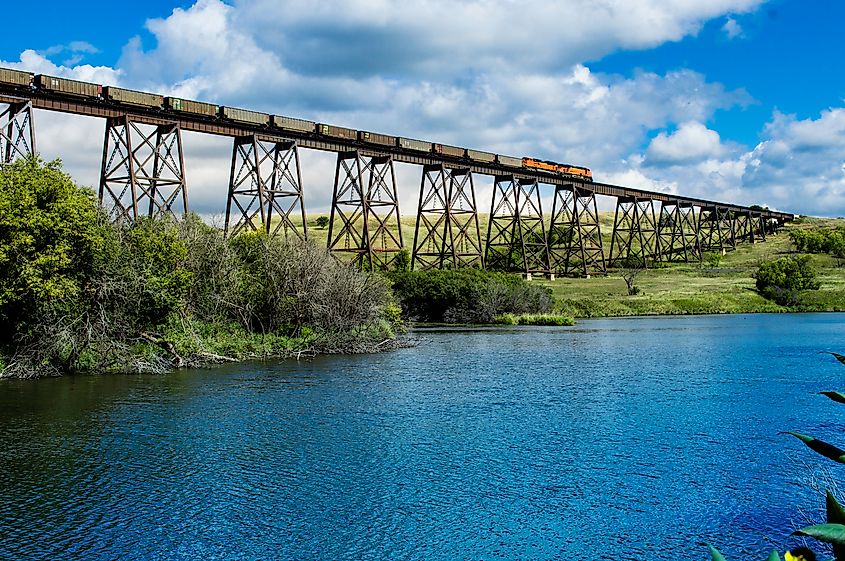
Valley City sits over three hours east of Medora in a far more green and fertile part of North Dakota than the Badlands near the western end of the state. The community’s lands were once the prominent hunting grounds of several Native American tribes, including the Sioux, Cree, Cheyenne, and Ojibwa. The town was officially incorporated in 1872 as Worthington, but it wasn’t until later that it gained the name it has today.
One of the first places guests should visit is the Valley City Rosebud Visitor Center. This cute spot is made from an original motorcar from the Northern Pacific Railroad, which was used by the original superintendent. The refurbished motorcar is a historic location for the town and is the perfect place to learn about the community’s history and culture. There are both indoor and outdoor displays that go a long way in recreating the experience of the early settlers in the region. The community has the Sheyenne River flowing through the eastern parts of town, which adds to the beautiful allure of the city.
Chautauqua Park sits along the banks of the river, which is a charming spot for a picnic or for those with children who want to spend a few hours burning off steam. It also has a dock for fishing and launching boats in the water. There are also lots of nature sites located just outside the town’s borders, like the Owl Site Waterfowl Production Area. There is also the Sheyenne River Valley National Scenic Byway, which is located in town. These sites are perfect for sightseeing and enjoying the natural charm of the area. There is also the Hi-Line Memorial Railroad Bridge along the Sheyenne River, which is a favorite place for taking photos. The Alley Beans coffee shop is one of the most delicious spots for those looking for a locally owned place to get a handcrafted beverage.
Devils Lake
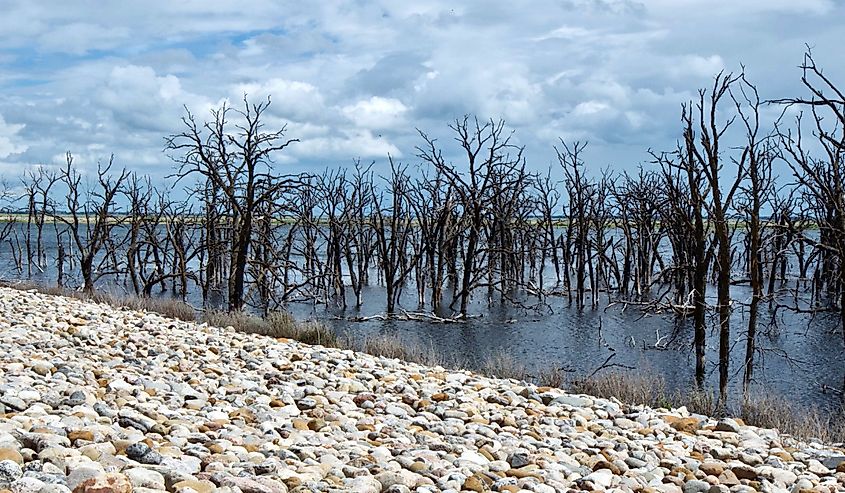
Devils Lake is a cozy community despite its name sounding a little ominous. The name comes from the Dakota peoples’ name for the lake, Mni Wakan, which can also mean “Spirit Lake.” It is situated near the border of Manitoba, Canada, and approximately two hours north of Valley City, making it one of the more northerly towns of the state. However, just because it is somewhat remote does not mean the town is dull, with the sizeable inland lake serving as the centerpiece of the community.
The first European home built along the lake dates back to 1882, and the community was first surveyed a year later. At the time, the town was called Creelsburg, but it was later renamed Devils Lake in 1884. The lake is the largest natural lake in North Dakota and is home to a diverse variety of wildlife, making it perfect for fishing, boating, and bird-watching. Just north of Devils Lake is Alice Lake, which is approximately 30 minutes from town and is the ideal spot to learn more about the local fauna at the Lake Alice National Wildlife Refuge. Those who want a front-row seat of Devils Lake and to spend the weekend fishing should consider booking a stay at the Woodland Resort.
The White Horse Hill National Game Preserve, situated on the southern end of Devils Lake, has a four-mile trail that is perfect for hikers of all ages and skill levels. The trail takes explorers on an exciting trek through prairie, wetlands, and the other diverse landscapes of this area of the state. The small town of Devils Lake is the ideal launch pad into this natural wonderland and has several lovely spots to eat and rest. Proz Sports Bar and Grille is a great place to get a delicious dish with sweet potato fries, nachos, and several other options.
Jamestown
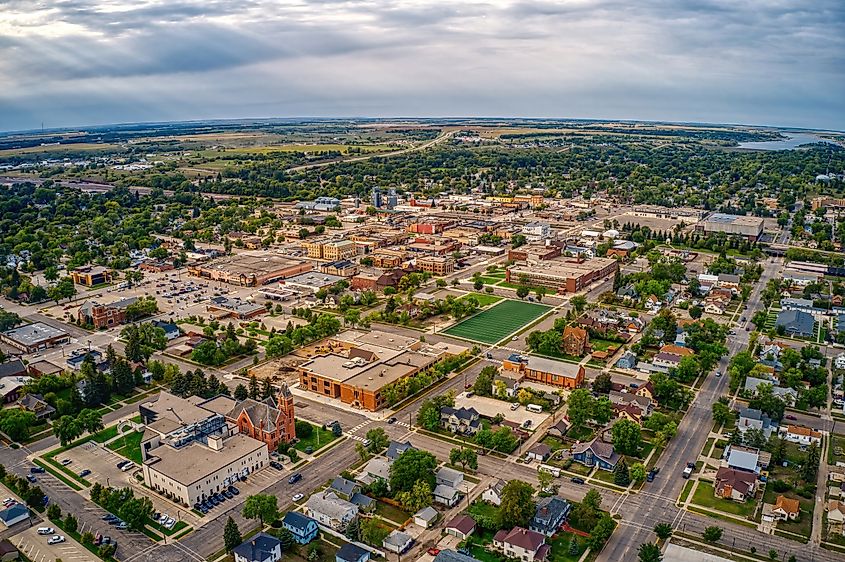
Jamestown is conveniently located and home to the world’s largest buffalo statue (known as the Buffalo Monument). It is only about an hour and a half away from North Dakota’s capital, Bismarck, the second-largest city in the state after Fargo. Jamestown got its name from the city in Virginia by the same name and from the James River, which flows through its borders. Fort Seward is one of the original European structures built in the town, dating back to 1872.
The fort still stands in the city and is well-preserved despite having been abandoned in 1877. Guests to the city can see the largest US flag on display in the whole state at Fort Seward and potentially camp out at the location to get an authentic historical experience. Not far from the Buffalo Monument in the southern parts of town is the Frontier Village, which offers visitors free admission into the period-accurate village designed to give people a hands-on experience of the early settlers. Visitors can also indulge in camping, either with a tent or camper if they prefer, and get a front-row seat to the majestic sky above.
The beautiful Saint James Basilica is one of the most stunning churches in Jamestown and has served as a central part of the community for decades. Visitors can learn all about the history of the Gothic building, which dates back to its construction in 1910, and better understand its influence on the community when they visit. There are several lovely spots to eat, but Drift Prairie Brewing Company is one of the tastiest. The company’s tap room is wonderful for those who wish to have an Arrowhead Ale or a Pickle Lager, to name a few, while talking and mingling with the welcoming locals.
Wahpeton
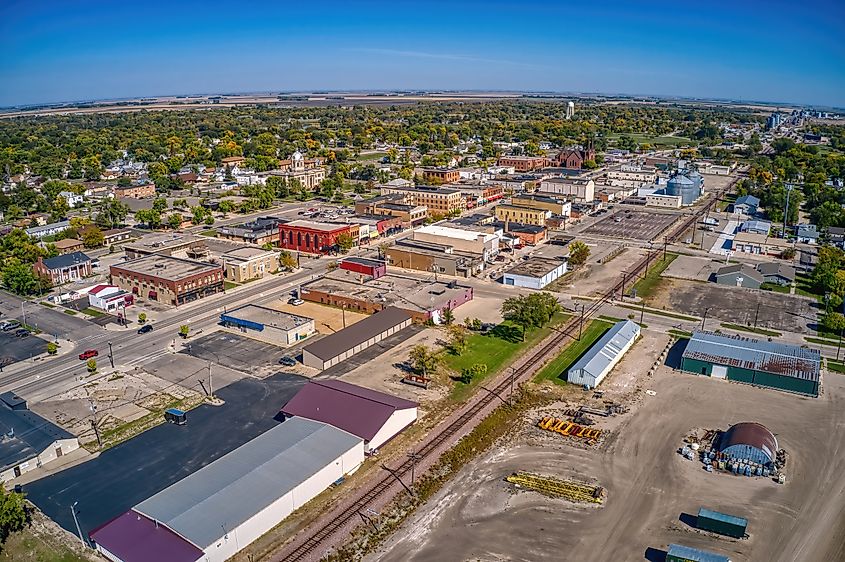
Like, Jamestown, Wahpeton is famous for its animal statue, which is the largest of its kind. The city is home to the world’s largest catfish, known to locals as “The Whapper.” The unique fish statue weighs 5,000 pounds, stretches to 40 feet, and reaches a height of 8 feet. Visitors can drop by this statue, admire it, or take photos with it by visiting the spot situated along the Red River.
The site of The Whapper and the Red River is also a great place to enjoy boating, fishing, and hiking. The river has a boat launch, a fishing pier, and camping options so that guests can get a fully immersive experience in the natural surroundings. Wahpeton’s European settlements began with a single settler in 1864, Morgan T. Rich, who established his farm in the area. It wasn’t until 1869 that the city was officially established as Richville, but its name was later changed to the Sioux word Wahpeton in 1873, which loosely translates to “Leaf-dwellers.”
Folks visiting the town can learn all about this history by visiting the Richland County Historical Museum, which has several awesome displays, including Native American artifacts and collections of Rosemeade pottery. The Prairie Rose Carousel is another gorgeous historic landmark in the city. This fully restored carousel dates back to 1926 and consists of a stunning calliope, 20 horses, and two chariots. It is ideal for travelers with children who hope to get plenty of photos of their families. Those looking for a good place to rest up while staying in town should consider booking a room at the AmericInn by Wyndham and getting a bite at the Fryn’ Pan Family Restaurant.
New Salem

New Salem traces its roots back to 1883 when the first group of hearty settlers arrived from the German Evangelical Synod of North America. The very first group consisted of only a few people, their household goods, and farming equipment. These people lived out of the railroad boxcars until homes were built, and held their very first church service in June of 1883, just a few months after their arrival.
Much like its eastern neighbors of Jamestown and Wahpeton, New Salem also boasts a large statue of a beloved local animal. New Salem is home to Salem Sue, the world’s largest Holstein cow. It stands at 38 feet tall and 50 feet wide, weighing it at approximately 12,000 pounds, this beautiful creature is one of the most popular roadside attractions. Not far away from this monumental statue is the Morton County Fairgrounds. The city hosts a fair every year, usually towards the end of summer, that includes music, animals, and lots of other exciting activities for the whole family.
North Park Campground is a fun and exciting place to spend a weekend that offers camper sites as well as more rugged tent sites for those who prefer a more authentic nature experience. The campground also has a group firepit, playground, and a picnic area. In addition, the town has the Red Trail Links Golf Course, which is perfect for those who want a fun place to spend a few hours in the sun. The golf course doesn’t take reservations, and guests who choose to spend time out on their green simply need to drop their payment in the dropbox.
The undiscovered towns of North Dakota offer travelers to the region an amazing opportunity to experience the heart of the northern United States. North Dakota consists of three main portions: the Missouri Plateau, Red River Valley, and Drift Prarie. These different areas have made the state one of the most unique, with rich farmland in the Red River Valley and more arid desert regions by Theodore Roosevelt National Park. Regardless of where travelers choose to visit, North Dakota’s small, undiscovered towns are the ideal launching pads into the wilderness of the state.











